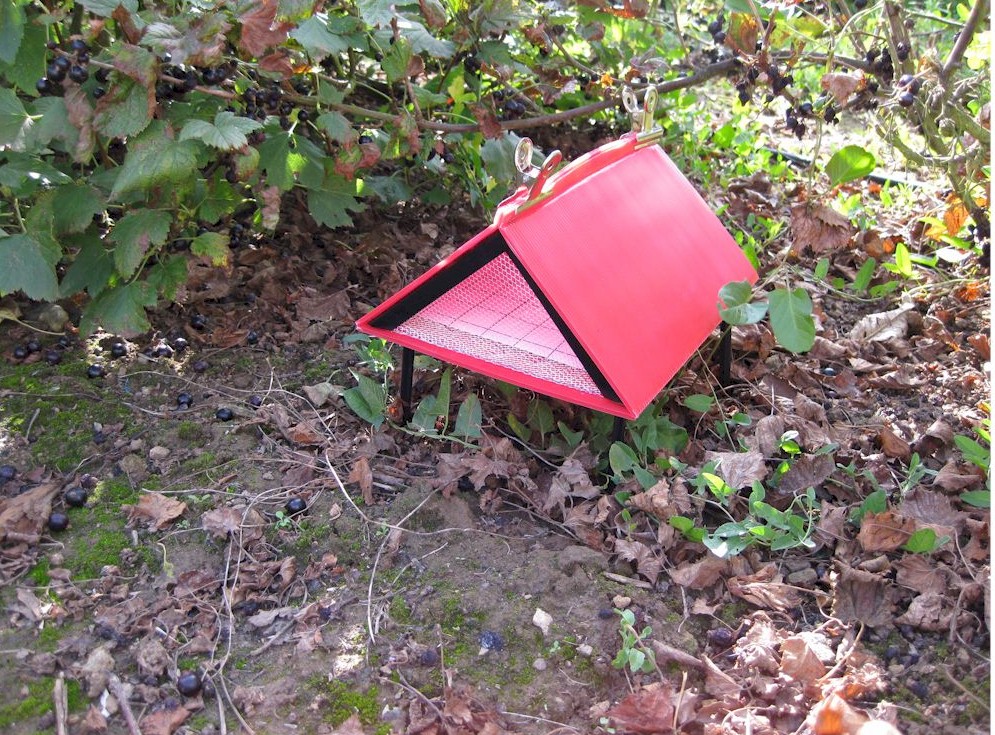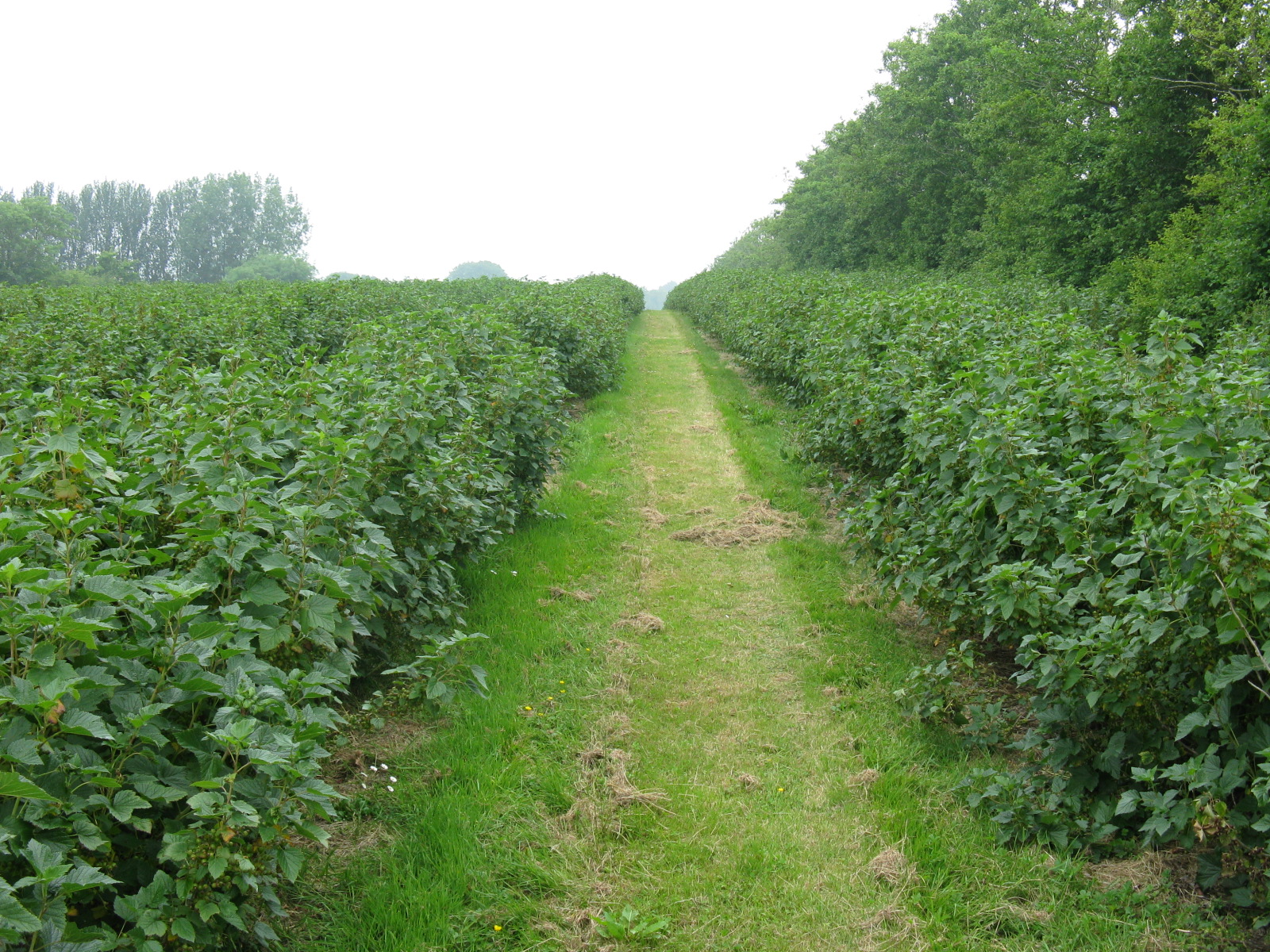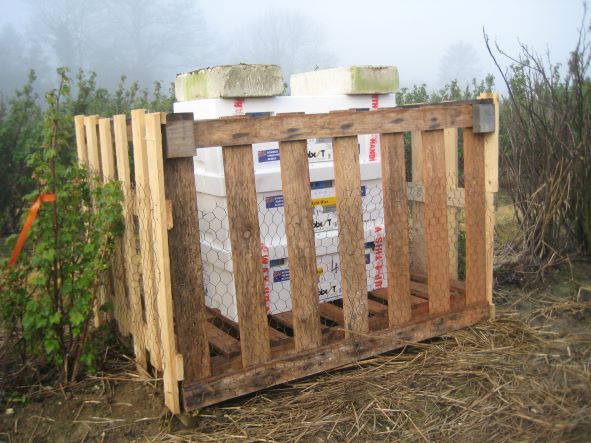Please click here to access the main AHDB website and other sectors.
- Home
- Knowledge library
- Developing novel biocontrol methods for pests and disease in blackcurrant
Developing novel biocontrol methods for pests and disease in blackcurrant
This information was last updated in 2015.
Discover new ways to control botrytis, leaf midge and sawfly in blackcurrant.
Research to develop novel approaches to pest and disease control in blackcurrant
A five-year Defra Horticulture LINK project was set up in 2010, to develop novel control methods for Botrytis, blackcurrant leaf midge and blackcurrant sawfly. The results of the work on each of these is summarised in these pages.
Action points
For Botrytis control
- The first three fungicide sprays applied from first flower are the most important treatments for Botrytis control. If an effective fungicide programme is applied at this time, then there is no benefit from additional fungicides near to harvest.
- There is some evidence to suggest that high nitrogen treatments may lead to a high incidence of Botrytis in blackcurrant.
To enhance bee populations
- Survey bee numbers in plantations.
- Where bee populations are low, adjacent habitat is pollinator poor, inclement weather is predicted or where there has been a history of poor fruit set, supplement crops with managed bumblebee nest boxes for a short-term solution.
- If providing plantations with additional bumblebee nests, protect from badger attack. This can be done by placing nest boxes inside an apple bin.
Protecting bumblebee nests from bagders
- For long-term improvements in bee populations and pollination consider leaving untidy areas of rotting wood and tussocks of grass for bumblebees to overwinter and nest in.
- Provide undisturbed, south-facing areas of sparsely vegetated ground for solitary bees to nest in. Loose, crumbly soil is best for bees to dig.
- Sustain and increase bee numbers when plantations are not in flower, by providing alternative food sources.
- Provide flowers with an open habit including species from the Umbelliferae (hedge-parsley), Compositae (mayweed, daisy, thistle), Ranunculaceae (buttercup) and Rosaceae (Potentilla – cinquefoil) families, to encourage a wider diversity of pollinating insects.
- Blackthorn and willow should be encouraged in hedgerows as an early source of forage.
- Provide a variety of plants that can provide season long flowers from mid-March to late August. Large sized patches of beneficial plants are more attractive than small patches.
To control blackcurrant leaf midge
- Control of blackcurrant leaf midge is important in newly planted and establishing plantations (including those recently cut-down), but control in established crops is less important providing there is adequate regenerative growth.
- The sex pheromone trap can be used to successfully time spray to control the midge.
- Traps are best checked twice weekly from March, to accurately time sprays against the first and second generation.

Blackcurrant leaf midge sex pheromone trap
- Lambda-cyhalotrhin (Hallmark) is the most effective crop protection product currently approved on blackcurrants for leaf midge control. Sprays should be applied within a few days of threshold catches (>10 midges/trap) for the first and second generation.
To control sawfly
- A commercially available sex pheromone trap is under development and will be available in the near future to time sprays for sawfly control.

Blackcurrant plantation coming into full cropping.
Botrytis in blackcurrant: varietal differences in susceptibility
Learn about how Botrytis affects blackcurrants and the varietal differences in susceptibility to the pathogen.
Varietal differences in susceptibility
Botrytis on blackcurrant: Timing of fungicide sprays
Guidance on the key times to apply fungicides to control Botrytis in blackcurrant.
Botrytis on blackcurrant: effect of pollination
Pollination in blackcurrant can affect yields and fruit quality, and susceptibility to disease.
Botrytis on blackcurrant: additional effects
Find information on the role of Botrytis in blocking filters in the processing of juice and the effects of high nitrogen on fruit susceptibility to Botrytis
Blackcurrant leaf midge: the relationship between galling damage and loss of growth, and use of sex pheromone traps
A detailed look at specific damage caused by blackcurrant leaf midge, as well as information on a novel way of countering its threat.
Blackcurrant sawfly
Tale a look at this damaging pest of blackcurrant and potential ways to tackle it.
Management of blackcurrant sawfly
Useful links
AHDB funded research into blackcurrant botrytis control
Evaluation of fungicides for the control of Botrytis
Developing traps and thresholds for blackcurrant sawfly
Read the biocontrol in soft fruit guide
Download the bush fruit crop walkers' guide
Authors
These pages were originally authored by Michelle Fountain, Angela Berrie and Scott Raffle (NIAB) in 2015.


